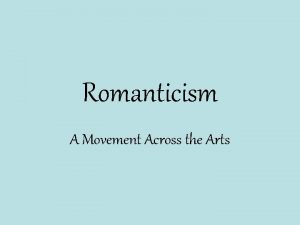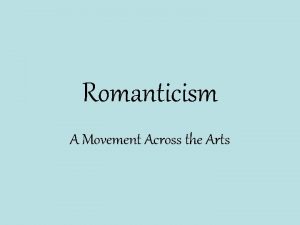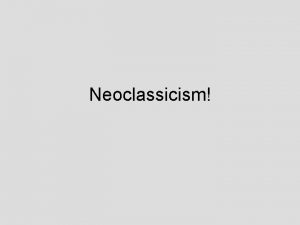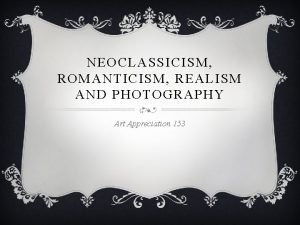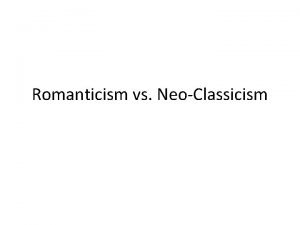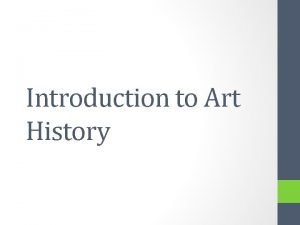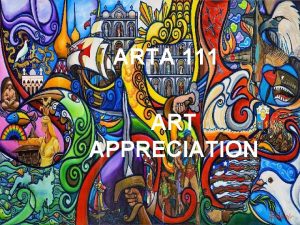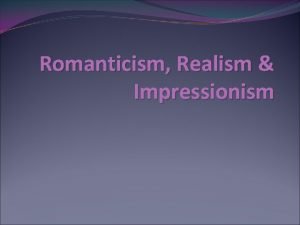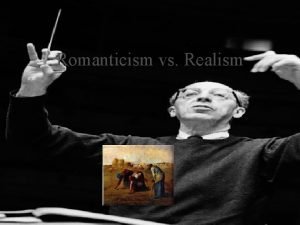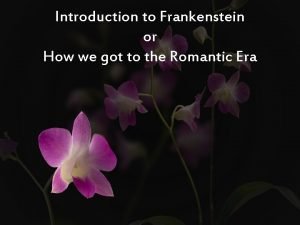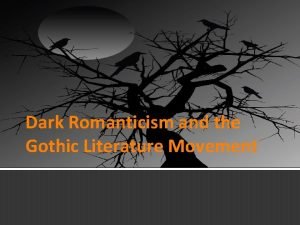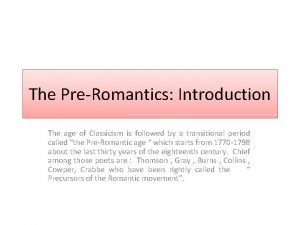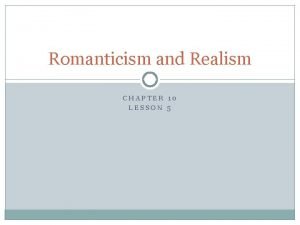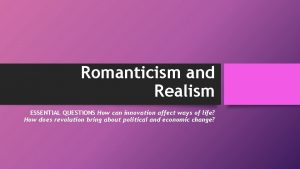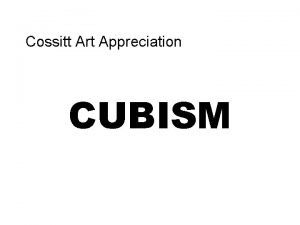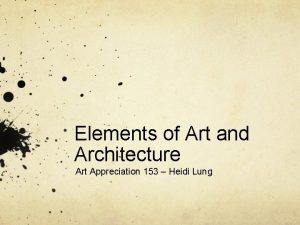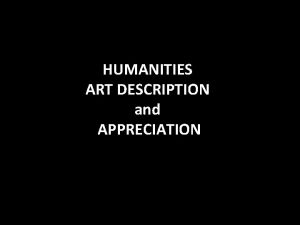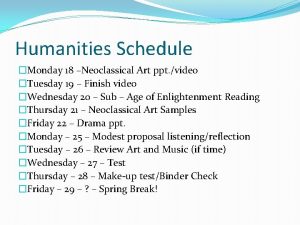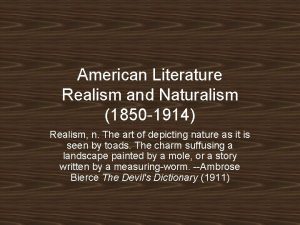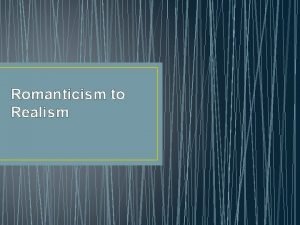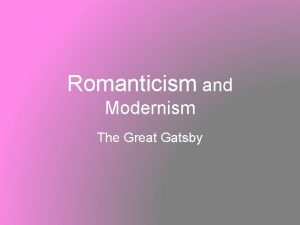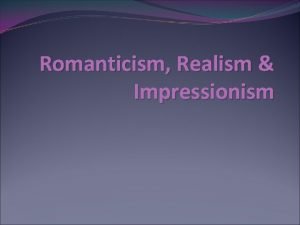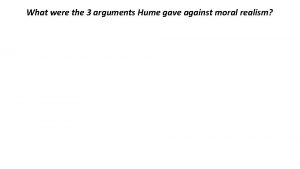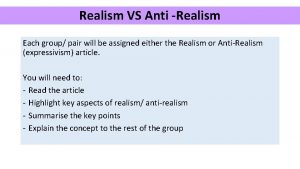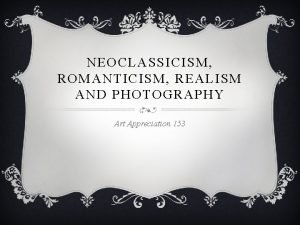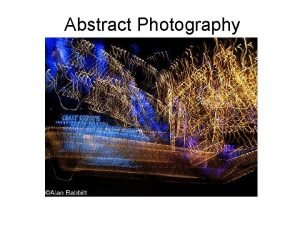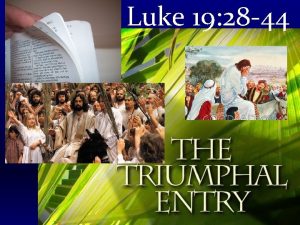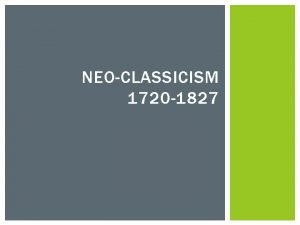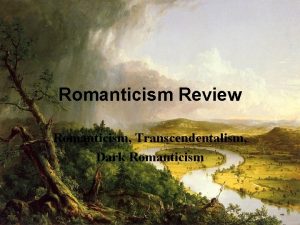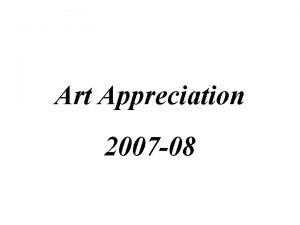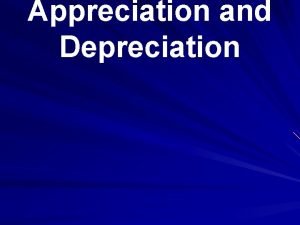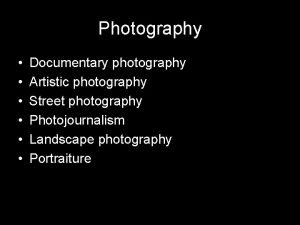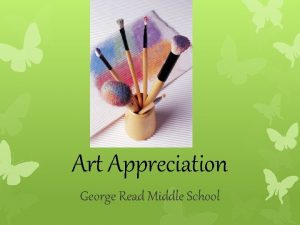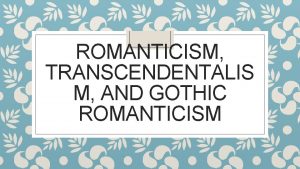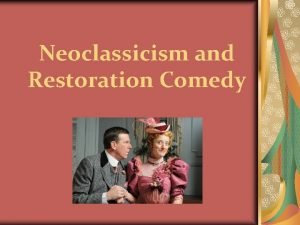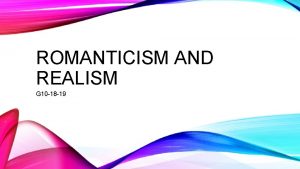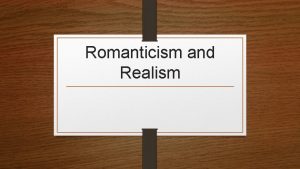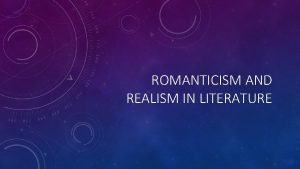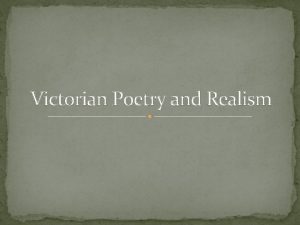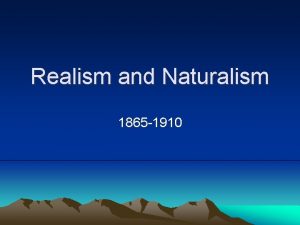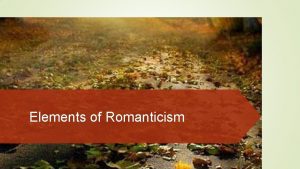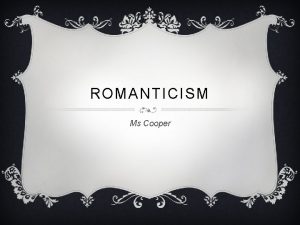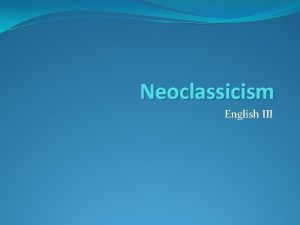NEOCLASSICISM ROMANTICISM REALISM AND PHOTOGRAPHY Art Appreciation 153




































- Slides: 36

NEOCLASSICISM, ROMANTICISM, REALISM AND PHOTOGRAPHY Art Appreciation 153

LEARNING OBJECTIVES 1. Identify the formal and iconographic characteristics of Neoclassicism, Romanticism and Realism. 2. Discuss how social and political events affected the artistic production of the times. 3. Identify and describe the new materials employed in the late 17 th through the mid-19 th century.

NEOCLASSICISM v A visual expression of the ideas of the Enlightenment v Order and rationality are valued above all v Neoclassical painters rejected both the high drama and murky atmosphere of Baroque art and the misty sentimentality of the Rococo v They searched for clarity of line, color, and form, admiring the simplicity of Greek art

NEOCLASSICISM DAVID & THE FRENCH REVOLUTION • Art now should express a serious moral purpose • Jacque Louis David’s painting tells a story about the founding of Rome, and emphasizes the idea of self-sacrifice for the state • The rigid outlines of the men’s forms express their serious purpose, in contrast to the soft, “wilting” forms of the women - expressing the emotion of the scene • David’s work was seen as a condemnation of the Rococo style and of the regime that supported it

NEOCLASSICISM DAVID & THE FRENCH REVOLUTION v In his Death of Marat, David turns the controversial revolutionary (and his friend) Marat into a political martyr v He is murdered in the bath (soaking because of a painful skin disease) v David radically simplifies the background - as in a work by Caravaggio, nothing distracts us from the image of Marat dead

NAPOLEONIC ART Napoleon became Emperor of France from 1804 In 1815 Napoleon embraced the Neoclassical style in order to associate his empire with that of ancient Rome. David was his first painter and Canova was his sculptor. Canova sculpted classical style portraits including one of Napoleons sister Pauline as Venus.

NEOCLASSICISM IN AMERICA Jefferson’s Monticello Neoclassicism was not just for the French…think of Thomas Jefferson. His Monticello homestead and plantation is based on the neoclassical style. You can take a really cool virtual tour of Jefferson’s Monticello by visiting the link under the web resource folder.

ROMANTICISM VS. NEOCLASSICAL Romanticism made the shift from the neoclassical emphasis on reason to an emphasis on feeling.

THE BIRTH OF ROMANTICISM v Both Neoclassicism and Romanticism shared a strong sense of moral purpose v They each inspired a passionate adherence on the part of their supporters v But they idealized completely different values v The Romantics rejected the logic and order of Neoclassicism v Instead of looking to past models for universal truths, Romantic artists looked within themselves v Romantics were attracted to the savage, untamed aspects of the natural world – they sensed that nature could never really be controlled

ROMANTICISM “Man is born free, but is everywhere in chains, ” Rousseau, 1792 - Social Contract. Romanticism emerges from a desire for freedom both political and personal (feeling, action, worship, speech).

ROMANTICISM GOYA AND THE ROMANTIC REACTION v Goya witnessed the war in Spain after Napoleon installed his brother on the Spanish throne v He paints a massacre of innocent, unarmed civilians in Madrid v He focuses on the terrified victims and shows one figure in a crucifixion-like pose v The painting is a mixture of brutal realism and passionate romanticism v It acts as a reminder of similar acts of political repression and cruelty in our own time

THE BIRTH OF ROMANTICISM v The subjects of Friedrich’s works could not have been more different from the subjects preferred by Neoclassicists v In place of historical or mythological scenes, he painted seascapes, forests, and mountains v He often places a solitary traveler silently contemplating the infinity of nature v He evokes a sense of yearning and melancholy

A NOTE ABOUT ROMANTICISM 1800 -1840 Romanticism, first defined as an aesthetic in literary criticism around 1800, gained momentum as an artistic movement in France and Britain in the early decades of the nineteenth century and flourished until mid-century. With its emphasis on the imagination and emotion, Romanticism emerged as a response to the disillusionment with the Enlightenment values of reason and order in the aftermath of the French Revolution of 1789.

ROMANTICISM IN MUSIC & POETRY v Not only a creative movement in visual arts, Romanticism finds itself in music and poetry during this time. MUSIC- melodic and lyrical Composers: Schubert, Liszt, Chopin and Brahams POETRY-exotic settings Authors and Poets: Keats, Wordsworth, Coleridge, Shelly, Lord Byron, Mary Shelly (Frankenstein)

JOSEPH MALLORD WILLIAM TURNER v Turner’s vision of nature was similar to that of Friedrich, who gloried in the grandeur and power of the natural world – what the Romantics called the sublime v In the Slave Ship he shows a disaster caused not just by the destructive power of nature, but also by human greed and fear - the slave traders have thrown their human cargo overboard in attempt to save themselves as a typhoon approaches v Slave Ship is the ultimate Romantic scene of wild beauty mixed with horror

ROMANTICISM AND POLITICS IN FRANCE v The young Romantic painter Theodore Gericault went to Rome and was captivated by Michelangelo’s Last Judgment and also by the works of Caravaggio v In the Raft of the Medusa he captures the drama and horror of the aftermath of the sinking of a French ship v He focuses on the dramatic moment when the survivors see the ship that will rescue them creating a dynamic pyramid of figures, showing a range of human emotion from despair to elation

INGRES AND LATE NEOCLASSICISM v In France the style of David continued in his student Ingres v Ingres consciously opposed the style of his rival, Delacroix, who was a colorist - insisting that beautiful line was more important that dramatic sweeps of color and tone v In Ingres’s portraits he brilliantly recreates beautiful details of texture and pattern

THE FRENCH ART WORLD DIVIDED v The French art world was divided into 2 camps - Ingres led the new classicists, who admired Raphael - Delacroix led the Romantics, who revered Rubens v This illustrates a basic difference between painterly and linear styles v A linear artist draws with sharp outlines, clearly defined forms, and relatively solid areas of color v A painterly artist paints with broader strokes, without distinct outlines between shapes, with gradual gradation of light to dark tones, and with colors blended into each other

AMERICAN ROMANTICISM: THE HUDSON RIVER SCHOOL v The first authentically American “school” of painting v Artists saw America as a new, unspoiled land of great promise v Thomas Cole creates a calm, reflective mood in this landscape painted in the Catskills – the winding river meanders slowly through a sunny world, fertile with possibilities School – here meaning a group of artists with a similar style

REALISM: ART AND POLITICS v Realist artists focused on the world around them – going further than the Romantics in exposing the gritty details of contemporary life v Daumier records a battle between the people in Paris and the government - after the protest of a law prohibiting unions, a sniper in a working-class apartment building killed a soldier – the remaining soldiers massacred the families in the building v Daumier honestly depicts the tragic aftermath of unjust violence

REALISM: ART AND POLITICS v On huge canvases, Courbet paints ordinary and working-class people v He shows ordinary people clustered around an open grave – the composition seems rather boring and the painting almost pointless v Courbet faithfully paints the people of his native village and emphasizes the reality of this occurrence of death – nothing is idealized or romanticized

Courbet was the leading figure in the Realist movement. Using a palette of dirty browns and grays, he conveyed the dreary and dismal nature of menial labor in mid-19 th century France. His work was rejected by the jury in the 1855 Salon so he set up his own exhibit called the Pavilion of Realism.

REALISM IN AMERICA v Influenced by rationalism and empiricism (the search for knowledge based on observation and experience). American artist Eakins’ uses brutal realism in this painting's depiction of a medical college operating amphitheater caused rejection from the Philadelphia exhibition for America's centennial.

WINSLOW HOMER, 1865, VETERAN IN A NEW FIELD This veteran's productive work implies a smooth transition to peace after the Civil War, but Homer placed a single bladed scythe in his hands, a symbol of the deaths of soldiers and of Abraham Lincoln.

PHOTOGRAPHY The invention of photography in the 1830’s was greeted with enthusiasm and an awareness of its historical importance. It took several decades, however, before it became truly accepted as one of the art media.

PHOTOGRAPHY TECHNIQUE AND DEVELOPMENT v Beginning in the 11 th century the first camera obscura (means dark room) was developed to study eclipses A small hole was cut in a window shade in a darkened room projecting an image of the sun onto the opposite wall v It can also project an upside-down image of the outside world using ordinary daylight v By the 1600’s a lens helped focus images more clearly v In the 1700’s a table model became available – with a mirror inside it projected a right side up image that artists could use for tracing

PHOTOGRAPHY TECHNIQUE AND DEVELOPMENT v The daguerreotype was introduced to the world by a French painter (who it is named after) in 1839 – it was the first permanent photographic image v The development of film using the “negative-positive” principle made multiple prints from a single image possible v Artists started to explore aesthetic possibilities

STRAIGHT PHOTOGRAPHY v. Early expeditionary photographers (precursors to landscape photographers) had to carry heavy cameras, chemicals, and plates v. O’Sullivan even had a portable darkroom v. He created some of the most beautiful landscape photographs ever made

REALISM & PHOTOGRAPHY IN THE 1860’S The Harvest of Death, Timothy O'Sullivan Union dead on the battlefield at Gettysburg, Pennsylvania July 5 -6 1863 Wet-plate technology enabled photographers to record historical events on the spot- and to comment on the high price of war, as in this photograph of dead Union soldiers at Gettysburg in 1863.

STYLES OF PHOTOGRAPHY STRAIGHT PHOTOGRAPHY v. As cameras became lighter and more portable, photographers were able to take pictures that recorded the moments of everyday life and even motion v. Cartier-Bresson utilized the 35 mm camera’s speed to capture what he called “the decisive moment”

STRAIGHT PHOTOGRAPHY v Documentary photography became increasingly important in the 20 th century - authentic, unretouched photographs that recorded important social conditions and political events v During the Great Depression photographers like Dorothea Lange worked for the government documenting miserable living conditions, in search of evidence to support the New Deal programs

FINE ART PHOTOGRAPHY v Though Europeans had experimented with the artistic potential of photography it wasn’t until Alfred Stieglitz formed the Photo-Secession group in 1902 that American photography began to be seen as fine art v He felt photographers could find design and life in unposed images v Steichen believed photographers should be free to manipulate their images v He combined images and played around with the chemistry to create painterly effects

PHOTOMONTAGE v The imaginative combination of photographic images is called photomontage v Through the widespread reproduction of photographs, artists can create impossible pictures that still seem connected to the real world v Hannah Hoch’s photomontages are satirical, even funny, but her political message was quite serious (we will study her in Unit 9)

CONTEMPORARY APPROACHES v Some contemporary photographers continue to work with traditional methods v Sebastiao Salgado in his series called “Workers” documented the plight of workers in 26 countries over 4 years v His images have a cinematic quality but depict devastating realities

CONTEMPORARY APPROACHES v Sandy Skoglund creates confusing images of reality by constructing her subjects – she uses the power of deception possible in photography for creative purposes

 Realism vs romanticism art
Realism vs romanticism art Neoclassicism vs romanticism art
Neoclassicism vs romanticism art British neoclassical period
British neoclassical period Neoclassicism vs realism
Neoclassicism vs realism Oath of the horatii neoclassical or romantic
Oath of the horatii neoclassical or romantic Art appreciation introduction
Art appreciation introduction Production process of artist and artisan
Production process of artist and artisan Art appreciation and criticism
Art appreciation and criticism Romanticism realism impressionism
Romanticism realism impressionism Romanticism vs realism
Romanticism vs realism Site:slidetodoc.com
Site:slidetodoc.com Neoclassical vs romanticism
Neoclassical vs romanticism Romanticism gothic literature
Romanticism gothic literature Pre romanticism and romanticism
Pre romanticism and romanticism Lesson 5 romanticism and realism
Lesson 5 romanticism and realism Lesson 5 romanticism and realism
Lesson 5 romanticism and realism Is organized into recognizable/recurring accent patterns
Is organized into recognizable/recurring accent patterns What is cubism in art appreciation
What is cubism in art appreciation Humanities 101 art appreciation
Humanities 101 art appreciation Elements of art in architecture
Elements of art in architecture Composed primarily to be sung.
Composed primarily to be sung. Art discussion questions
Art discussion questions Humanities art appreciation ppt
Humanities art appreciation ppt The romanticism (1795 — 1835) what is romanticism
The romanticism (1795 — 1835) what is romanticism What is realism
What is realism Romantic vs realist
Romantic vs realist The great gatsby modernism
The great gatsby modernism Romanticism realism impressionism
Romanticism realism impressionism No moral
No moral Realism vs anti realism
Realism vs anti realism Realism vs anti realism
Realism vs anti realism Romanticism photography
Romanticism photography Is abstract photography same as conceptual photography
Is abstract photography same as conceptual photography Ul 153
Ul 153 Psalm 153 kjv
Psalm 153 kjv Cs 153
Cs 153 Cio paris 20
Cio paris 20
